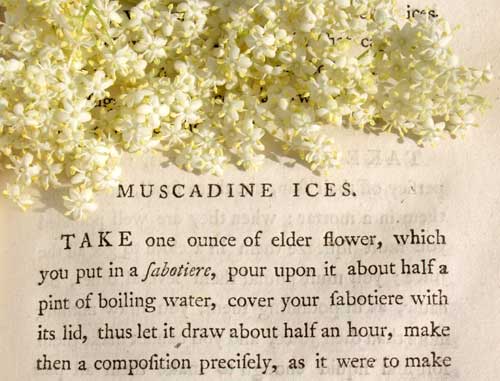 Today I’m going to share another one of my favorite web site. Historic Food belongs to Ivan Day, a highly regarded food historian. Mr. Day, however, is much more than a historian. He is much in demand to present and recreate historic recipes. He prepares historically accurate banquets for historic locations, such as these at Harewood House in Leeds and Fairfax House in York. Take a look at his Events section. He’s done quite a bit of television in the UK (as if you needed another reason to wish you were there) and has written a couple of books. His work has been exhibited in many museums, including the Paul Getty Research Institute, Philadelphia Museum of Art, the Museum of London, Fairfax House, the Bowes Museum and the Rothschild Collection.
Today I’m going to share another one of my favorite web site. Historic Food belongs to Ivan Day, a highly regarded food historian. Mr. Day, however, is much more than a historian. He is much in demand to present and recreate historic recipes. He prepares historically accurate banquets for historic locations, such as these at Harewood House in Leeds and Fairfax House in York. Take a look at his Events section. He’s done quite a bit of television in the UK (as if you needed another reason to wish you were there) and has written a couple of books. His work has been exhibited in many museums, including the Paul Getty Research Institute, Philadelphia Museum of Art, the Museum of London, Fairfax House, the Bowes Museum and the Rothschild Collection.
 He also gives historic cooking courses at his 17th century farmhouse in Cumbria in his period kitchen. Another reason I’d like to be England.
He also gives historic cooking courses at his 17th century farmhouse in Cumbria in his period kitchen. Another reason I’d like to be England.
Go explore his web site. But if you don’t have time, I leave you with a recipe for muscadine Ices.

Take one ounce of elder flower, which you put in a sabotiere, pour upon it about half a pint of boiling water, cover your sabotiere with its lid, thus let it draw about half an hour, make then a composition precisely, as it were to make a plain lemon ice, and as directed in that article; to tha tcomposition add your infusion of elder flower, pass the whole through a sieve, and put it in the sabotiere to congeal as we have explained.
From Borella The Court and Country Confectioner (London: 1770)

Very cool, Myretta! Fortunately on the website he explains what a sabotiere is. Now to figure out where to buy one, and where to get elder flowers!
I love this site! Fantastic illustrations and information. I would love to go to one of his classes.
Oooh! This is a scrumptious time suck! I see hours of research time on this site in my future!
I would too, Janet. Maybe we could schedule a Riskies class. 🙂